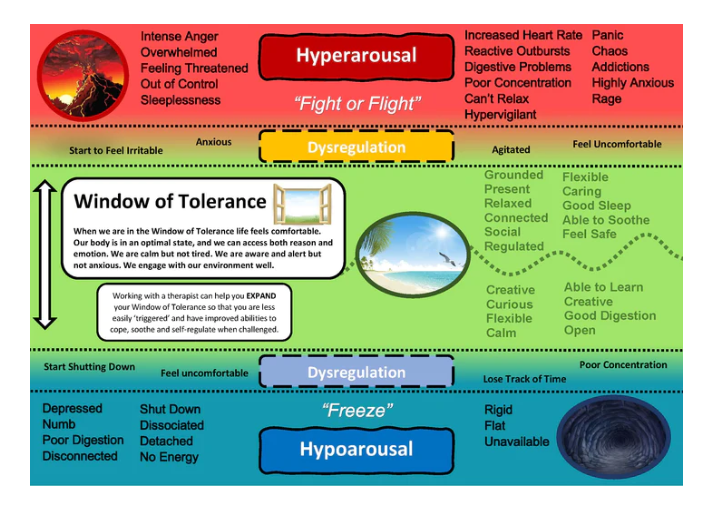The Window of Tolerance: Finding Your Balance
When working with clients, emotional regulation is almost always on the table. Human beings naturally move through cycles of activation and shutdown—it’s how our nervous system tries to protect us. Clinicians often use the term “Window of Tolerance” to describe the range where our mind and body function best.
The problem is that many people spend most of their time outside that window. This leads to frustration, disconnection, and a sense of being out of control. I often explain it like trying to drive a car that’s either redlining the engine or stalled on the side of the road. Neither feels good, and neither gets you where you want to go.
Here’s a breakdown of what the Window of Tolerance looks like:
Inside the Window
This is your balanced zone. You feel grounded, present, and capable of handling what’s in front of you. You can think clearly, problem-solve, and stay connected to yourself and others.
Above the Window (Hyperarousal)
Here your system is in overdrive. Common signs include anxiety, panic, irritability, racing thoughts, or feeling like you’re constantly on edge. It’s the “fight or flight” space.
Below the Window (Hypoarousal)
This is the shutdown zone. You may feel numb, exhausted, checked out, or disconnected. It’s a protective freeze response, but it can leave you stuck or disengaged from your life.
Why It Matters
The goal isn’t to stay inside the window all the time—that’s not realistic. The goal is to notice where you are and learn how to come back toward balance. Therapy often focuses on building tools that widen your window so life’s ups and downs don’t throw you as far or as often.
““The goal isn’t to stay in the window all the time—it’s to learn how to return to it.””
Some of those tools include grounding exercises, breathing techniques, safe relationships, and body movement. Think of them as anchors that bring you back to center when the waves of life push you too far one way or the other.
Awareness is always the first step. A simple practice is pausing throughout the day and asking yourself: “Am I above, below, or inside my window right now?” That question alone can begin to shift your relationship with stress and give you choices about how to respond.
Remember, the window isn’t about perfection—it’s about capacity. The more you practice noticing and regulating, the more room you’ll have to handle what life throws your way.
👉 Where do you notice yourself spending the most time—in, above, or below your window?
COMPASS CONVERSATIONS
At Compass Counseling, I believe therapy isn’t just about “fixing” problems—it’s about learning how to live with more strength, clarity, and purpose. These reflections are written to be practical and honest, the kind of conversations I often have in the counseling room. My hope is that you’ll find something here that helps you pause, reflect, and take one small step toward living with more resilience and connection.



